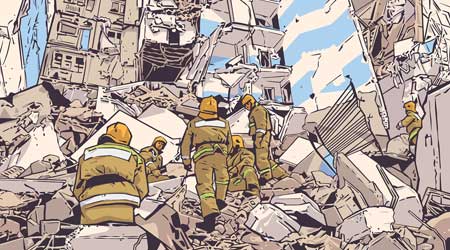Considerations for Retrofitting for Seismic Resilience
Many buildings can make significant improvements in seismic performance with simple, inexpensive retrofits.
While some old buildings have seismic deficiencies that can only be fixed with major structural work, many buildings can realize significant improvements in seismic performance with simple, inexpensive improvements, such as adding plywood to floors and roofs, strengthening wall connections to floors and roofs, and even just strengthening the connection between the building and foundations. But that is just the structural component of a building.
Typically, 80 percent of a building’s value is in non-structural equipment and contents, which may not be adequately braced to prevent damage in even a small earthquake. An earthquake could strike such a building, and while the structure performs well, the building could be a total loss due to non-structural damage. Adding seismic bracing to all systems and contents can go a long way towards surviving smaller, more frequent quakes with little to no interruption in business, and it does not have major cost implications. When planned along with other building renovation projects, this work can be done very cost-effectively.
The U.S. Resiliency Council is working with a national retailer that has more than 1,000 tilt-up-style U.S. stores. We recently completed a study showing that during their regular multi-year renovation schedules, seismic retrofits of these buildings (typically including strengthening the anchorages of the roof to the walls and improving the nailing in the plywood diaphragms) can cost about $1.50-$3.50 per square foot, achieving USRC Gold Level performance.
Many existing data centers, despite the enormous value of their contents and operations, are in fact constructed with similar systems. Those that were built in the mid-1990s or earlier are in fact probably as risky as typical big box warehouse stores if they have not been retrofitted.
New methodologies for assessing seismic performance like building rating systems allow engineers to not only identify deficiencies and propose fixes but also calculate the financial impacts of earthquakes on the existing facility, the improved facility, and thus report the return on investment that seismic improvements will have over time. This allows capital expenditure decisions for seismic upgrades to be made side by side with energy upgrades and will hopefully lead to better outcomes for business when natural disasters occur.
Evan Reis is a California structural engineer and executive director of the U.S. Resiliency Council. He works with public and private organizations to promote resilience and improve the performance of the nation’s infrastructure in natural disasters.
Randy Collins is a California structural engineer and principal and founder of FTF Engineering in San Francisco.
Related Topics:














